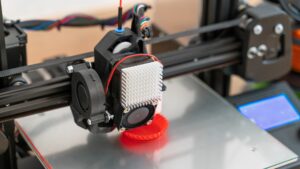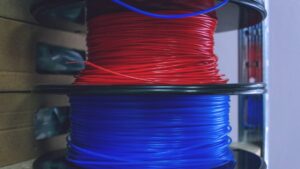
A Look at the Different Densities of 3D Printing Materials
There’s so much to learn about 3D printing materials. Come and find out what to look for when examining the different densities of 3D printing filaments.
844-810-1385
3D modeling has advanced in many ways to the point that any industry can use 3D printing technology to create its own realistic prototypes. If you’re in need of new ways to make your 3D models more realistic, here are five options you need to know about for your next project.
Projects should never lack detail. Every creation is unique, and some projects require far more detail than others. Each design needs to rely on its polygons, as these shapes form the first 2D model upon which the subsequent 3D model will be based.
For instance, if you’re designing a skyscraper, your 3D prototype should feature key details such as the business and building name, detailed doors and windows, and streetlights. You can even go so far as to print people walking around the building to show scale.
Establishing blueprints won’t create a realistic image right off the bat. You need a functional toolkit to make your designs pop more and seem real to others. This toolkit requires math and analytical skills, an open mind, and the right software.
A good toolkit has the right 3D modeling software to create a substantive visual of an object or layout. If you were to design something like a skyscraper, you wouldn’t only focus on the building itself; you’d want to dedicate time to beautifying the landscape surrounding the building, too. A functional toolkit will allow you to spend ample time creating the 3D elements of the building, including applying tough PLA for detail.
Topology refers to the polygons and their alignment that ensure your final image comes out the way you imagined. If you do not position these polygons correctly, the final image will appear distorted and unappealing overall.
Make sure to narrow in and clean up the topographic anatomy of your design before finalizing the 3D model and building it with your 3D printer.
Texture plays a big role in bringing a 3D prototype to life. Let’s think back to the skyscraper example. For a project like this to come to life, you need the right grains to make the building appear realistic.
Besides UV mapping, you need to render your effects; remove unnecessary parts like landscapes and replicas of people. Focus on adding the smaller details, such as cracks, color, and bumps, to create a realistic image.
The final touches are what make any project special. No project can be completed without fine-tuning the last-minute details. You want to review everything one more time before finalizing the project to ensure there are no odd colors or misaligned shapes.
Using 3D printing filaments brings many possibilities to life, whether you’re planning a project for a convention, presentation, or product demonstration. Build better concept designs and make them real with Filamatrix; our online shops are filled with fibers that allow experts in every industry to build more realistic 3D models. We can’t wait to see what 3D filaments do for your project.

There’s so much to learn about 3D printing materials. Come and find out what to look for when examining the different densities of 3D printing filaments.

Those interested in 3D printing have a lot to learn on how to use the system properly. Find out what you need to know about 3D printing and humidity levels.

3D printing has many variables that both beginners and experts need to know. Find out what effects temperature has on 3D printer filament.
Get professional insights, industry news, and our latest deals